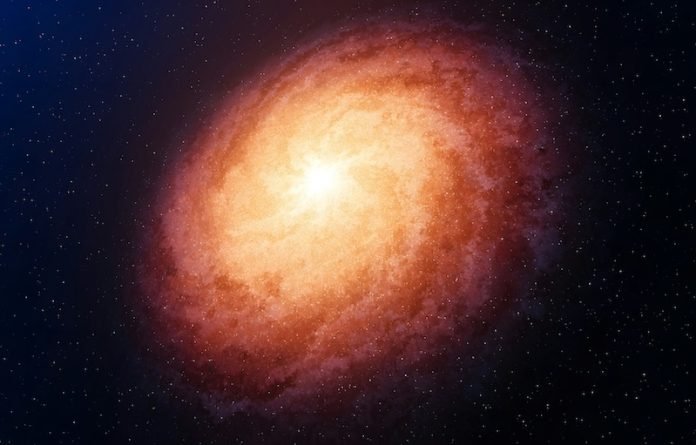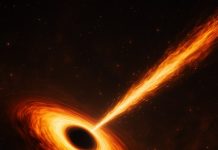
Once upon a time, at the very beginning of everything, the universe was a place of incredible creation and mystery.
New research has turned our understanding of this cosmic dawn on its head, revealing that black holes, those mysterious cosmic giants known for swallowing everything in their path, were not just silent witnesses to the universe’s birth but active participants in creating it.
For a long time, scientists thought that black holes came into the scene after the universe’s first stars and galaxies had formed. They were seen as cosmic endgames, the final chapters in the lives of massive stars.
However, this new study suggests something much more intriguing: black holes were there at the very start, acting as catalysts for the birth of stars and helping to kickstart the formation of galaxies.
Joseph Silk, a leading voice in this research from Johns Hopkins University and the Institute of Astrophysics in Paris, shares an exciting perspective.
He explains that these cosmic behemoths were not just present from the early days of the universe but played a crucial role in shaping it.
According to Silk, black holes acted like “gigantic amplifiers” of star formation, challenging everything we thought we knew about how galaxies come into existence.
This groundbreaking insight comes from observations made by the James Webb Space Telescope, which showed distant galaxies shining much brighter than expected, filled with young stars and supermassive black holes.
This contradicts the old theory that galaxies slowly grew after the first stars lit up the cosmos. Instead, Silk and his team propose that black holes and galaxies grew up together, influencing each other’s development from the universe’s infancy.
Imagine the entire history of the universe condensed into a 12-month calendar. According to this research, the events we’re talking about happened in the very first days of January.
Silk and his colleagues suggest that black holes didn’t just sit around; their outflows of gas and energy smashed into surrounding gas clouds, compressing them and sparking the rapid formation of stars. This process, they say, is what brought those early, bright galaxies into being.
The power of black holes lies in their gravity, so strong that not even light can escape. This immense force generates magnetic fields and violent storms of plasma, acting as cosmic accelerators that throw material out into space.
These processes, which are too distant for us to see directly, are believed to be the reason why the early universe was so lively, with black holes stirring up the cosmic pot and making stars at an astonishing rate.
Silk’s team divides the young universe’s story into two chapters. Initially, black holes’ energetic outflows fast-tracked star formation. Later, these outflows slowed, marking a shift to a quieter phase of galaxy growth.
The early universe, it seems, was a place of dramatic action, with black holes driving the creation of stars much faster than what we see in the more mature galaxies of our time.
This narrative flips our understanding of galaxy formation on its head. Instead of imagining galaxies forming quietly as gas clouds collapse under their own gravity, we now see a universe where black holes sit at the heart of the action, turning the gas into stars at an incredible pace.
This makes the first galaxies not just collections of stars but vibrant, bright communities, lighting up the early universe.
As we await more data from the James Webb Space Telescope, researchers like Silk are excited about the future. They believe that upcoming observations will not only confirm their findings but also offer deeper insights into how our universe came to be.
Silk’s work reminds us that the cosmos is a place of endless wonder, with black holes playing a starring role in the story of creation.
This research not only challenges our previous assumptions but also opens new doors to understanding the universe’s earliest days and the intricate dance between stars, galaxies, and the enigmatic black holes.
The research findings can be found in the Astrophysical Journal Letters.
Copyright © 2024 Knowridge Science Report. All rights reserved.



